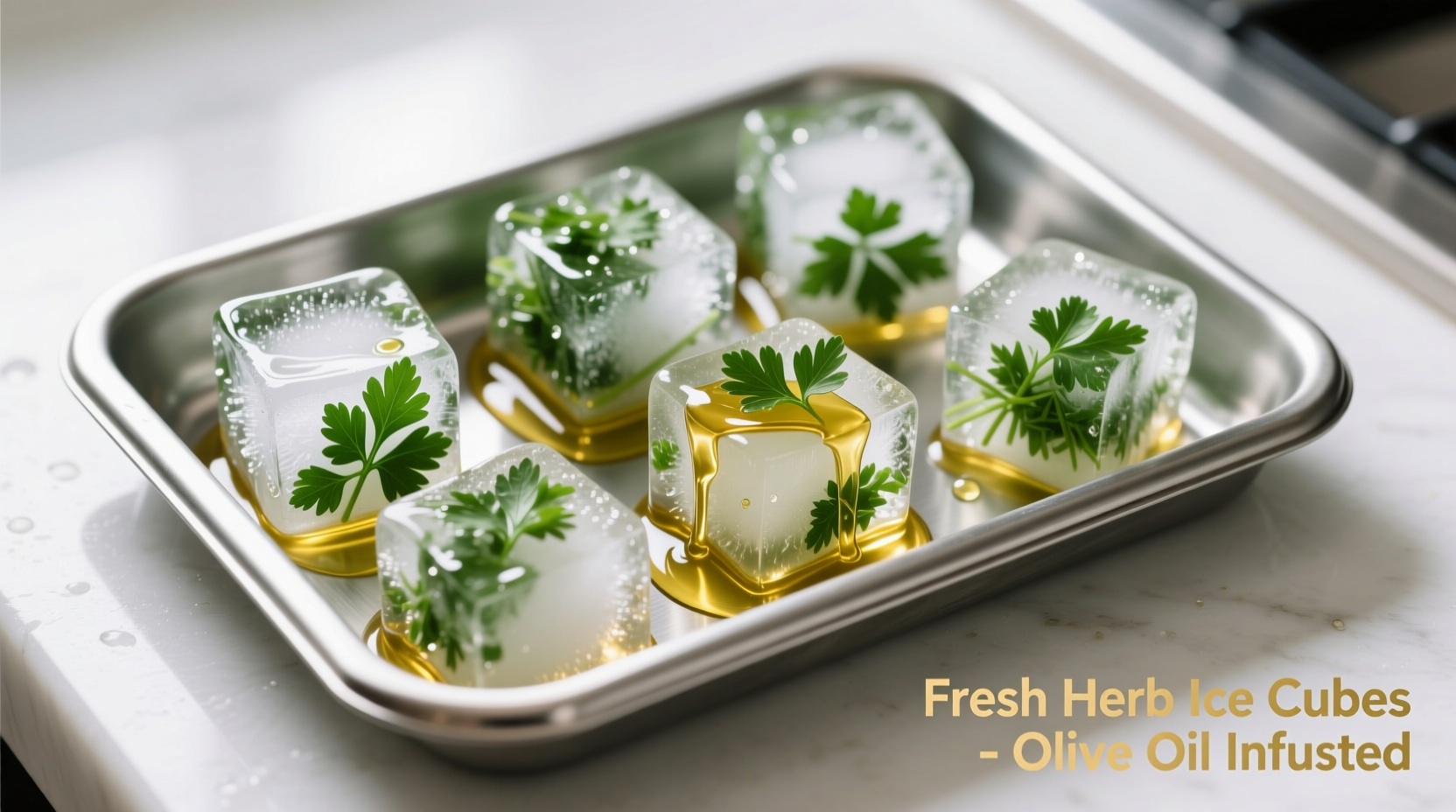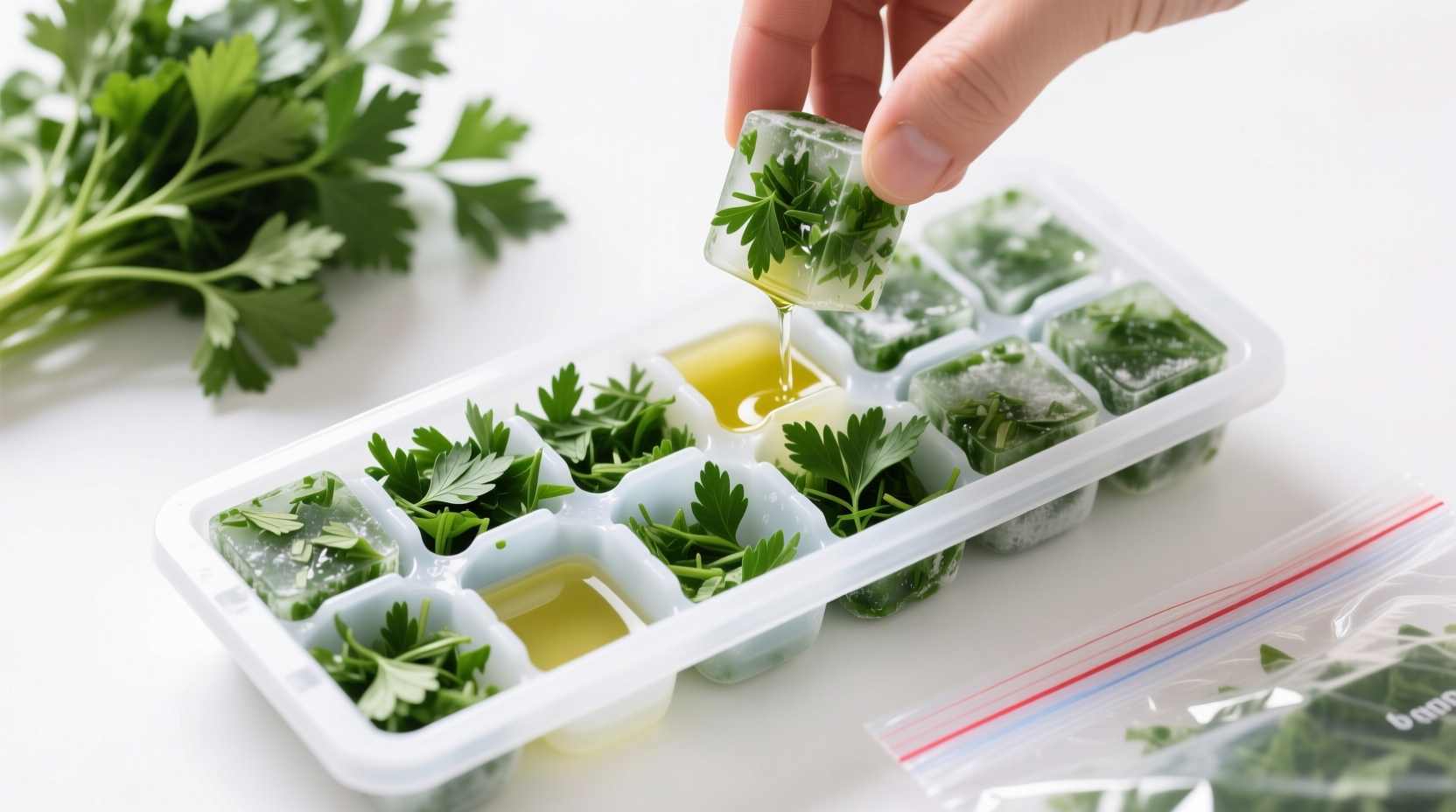Preserving your herb harvest doesn't have to mean sacrificing flavor. Freezing fresh parsley properly maintains its vibrant taste far better than drying, making it ideal for soups, stews, and sauces. As a chef who's worked with fresh herbs in professional kitchens for over 15 years, I've perfected techniques that prevent freezer burn and preserve maximum flavor.
Why Freezing Beats Drying for Parsley
Unlike delicate herbs like basil that suffer from ice crystal damage, parsley's sturdy leaves withstand freezing remarkably well. According to the National Center for Home Food Preservation, freezing preserves up to 90% of parsley's volatile flavor compounds compared to drying's 60-70% retention. This makes frozen parsley significantly more flavorful than dried versions for cooked dishes.
| Preservation Method | Flavor Retention | Best For | Storage Duration |
|---|---|---|---|
| Freezing (proper method) | 85-90% | Cooked dishes, sauces | 6 months |
| Drying | 60-70% | Spice blends, rubs | 1 year |
| Refrigeration | 100% (initially) | Raw applications | 1-2 weeks |
Step-by-Step Freezing Methods
Follow this professional kitchen-tested timeline for optimal results:
- Preparation (5 minutes): Wash parsley thoroughly in cold water. Remove thick stems but keep tender leafy stems for better flavor concentration. Gently spin dry in a salad spinner or pat with clean kitchen towels.
- Flash Freezing (1 hour): Spread chopped parsley in single layer on parchment-lined baking sheet. Place in freezer until solid (about 1 hour). This prevents clumping.
- Storage (2 minutes): Transfer frozen parsley to airtight freezer bags, removing all air. Label with date.
Advanced Freezing Techniques
For specific culinary applications, try these professional methods:
Oil or Water Infusion Method
Perfect for ready-to-use portions in cooking:
- Finely chop parsley and pack into ice cube trays
- Cover completely with olive oil or water
- Freeze solid, then transfer cubes to labeled freezer bags
This technique, recommended by the University of Minnesota Extension, preserves flavor compounds while providing convenient cooking portions. The oil method particularly enhances flavor retention for Mediterranean dishes.

When Frozen Parsley Works Best
Understand these context boundaries for optimal results:
- Use frozen: In cooked applications like soups, stews, sauces, and braises where texture doesn't matter
- Avoid frozen: For raw applications like garnishes or salads where texture is important
- Thawing tip: Add frozen parsley directly to hot dishes - no need to thaw first
Storage Duration and Quality Maintenance
Properly frozen parsley maintains peak quality for 4-6 months. Beyond this, flavor gradually diminishes though remains safe indefinitely at 0°F (-18°C). The USDA Food Safety and Inspection Service confirms that frozen herbs remain safe indefinitely when stored at proper temperatures, though quality peaks within 6 months.
Prevent freezer burn by:
- Using vacuum-sealed containers for longest storage
- Removing all air from freezer bags using the straw method
- Storing at consistent freezer temperature (0°F or lower)
Common Freezing Mistakes to Avoid
Learn from these frequent errors that compromise parsley quality:
- Freezing wet parsley: Excess moisture creates ice crystals that damage cell structure
- Skipping flash-freezing: Causes clumping and makes portioning difficult
- Using thin plastic bags: Allows air transfer that causes freezer burn
- Freezing whole sprigs: Makes it difficult to use small quantities later
Using Frozen Parsley in Cooking
Maximize flavor impact with these professional techniques:
- Add frozen parsley during the last 5-10 minutes of cooking to preserve flavor
- Use oil-frozen cubes as flavor bases for sautéing onions or garlic
- Substitute 1 tablespoon frozen parsley for 1 teaspoon dried parsley
- Blend frozen parsley cubes directly into sauces and dressings
Fresh vs. Frozen Flavor Comparison
While fresh parsley offers superior texture for raw applications, frozen parsley actually outperforms dried versions in cooked dishes. Research from Oregon State University shows frozen parsley retains more volatile aromatic compounds than dried parsley, delivering noticeably brighter flavor in finished dishes. The texture difference matters only in raw applications - once cooked, frozen parsley integrates seamlessly.











 浙公网安备
33010002000092号
浙公网安备
33010002000092号 浙B2-20120091-4
浙B2-20120091-4